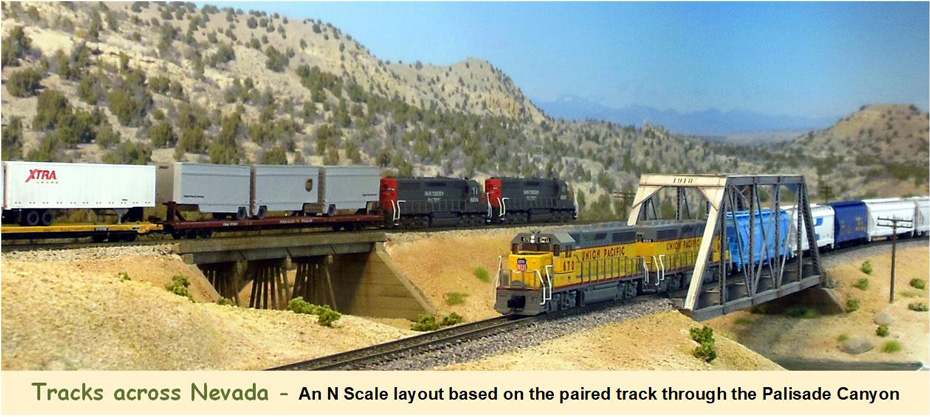This is an example of the kind of drawings I was using at this point. I felt that the west end of the paired track would make for an interesting operation. This would be intended to be the west end of the modeled area.
I did drawings like this for each of the elements that I wanted to include in the layout and ended up with 9. Besides the drawing shown above, some of the others included:
- North Valmay power plant - This coal burning power plant receives unit coal trains. The two tracks are separated by more than a mile here and a return loop from west to east connects those two tracks.
- Shoshone - The location mentioned in the first post where both tracks go under the I-80 freeway and continue south following the Humboldt River to Palisade canyon.
- Carlin - At the eastern end of Palisade canyon. This was a division point for the Southern Pacific and they maintained some maintenance facilities here. They also originated a local in Carlin that covered the mining industries to the west. There is a also double crossover here and a few industry sidings on the SP line.
- Flyover - I don't know if it's really called this but it's the point in the canyon where the WP line crosses over the SP line. Interesting group of bridges.
- Harny - When the City of San Francisco derailed here in 1937 due to sabotage, a bridge on the SP line that crossed the Humboldt River was also destroyed. The river was diverted to eliminate the need for a bridge.
- Palisade - Tracks cross a pair of bridges on the west side before entering tunnels. On the east side the SP line crosses a bridge that was destroyed in a 2008 derailment. This is one of the more photographed areas on the paired track.





